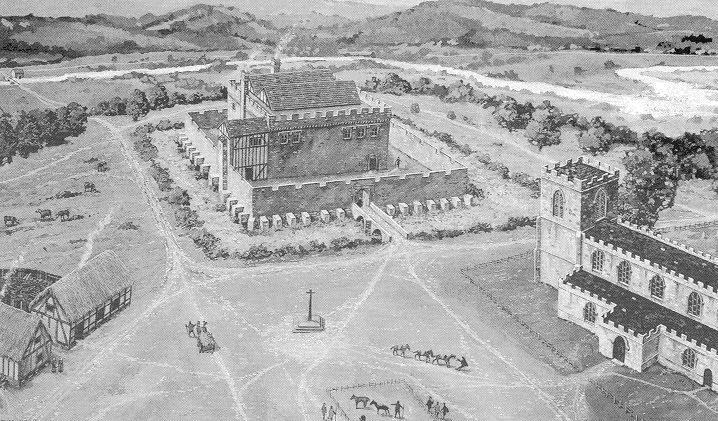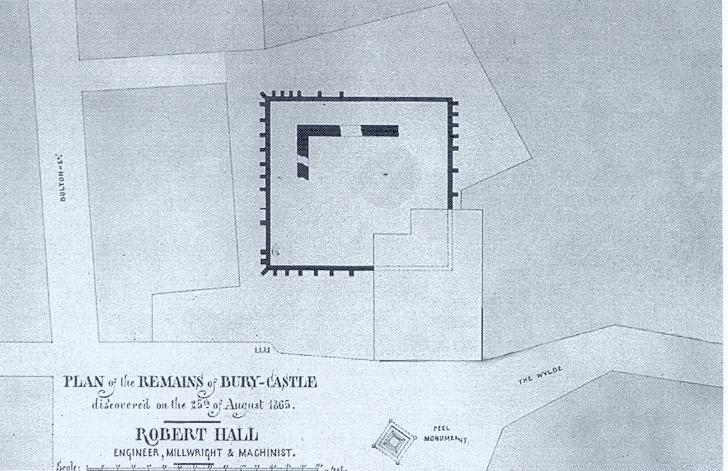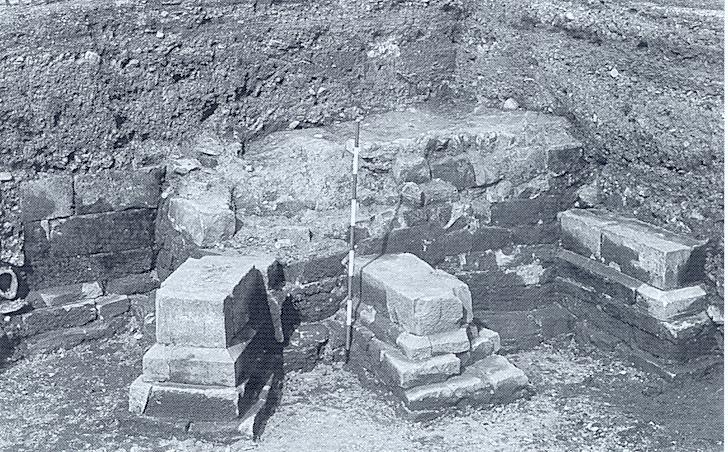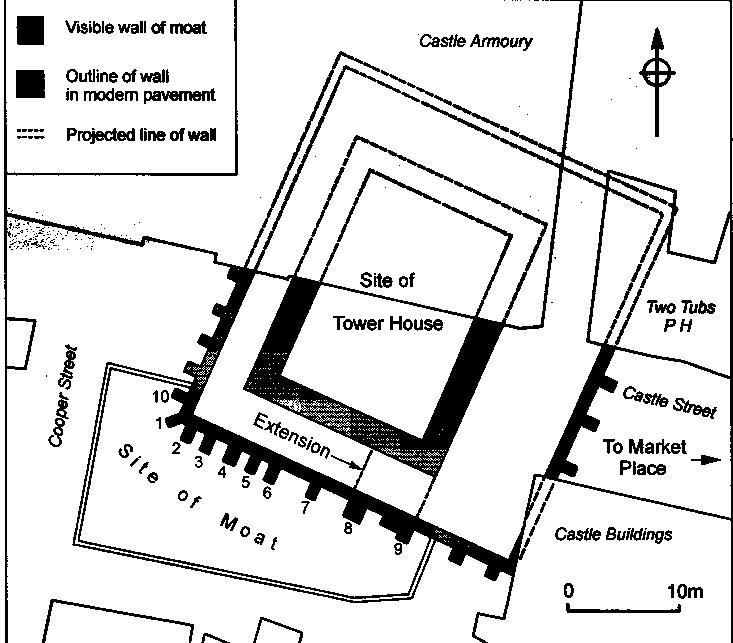 |
 |
The fortified manor house known as Bury Castle was begun in 1469 by Sir Thomas Pilkington, lord of the manors of Pilkington and Bury, and a powerful member of Lancashire's gentry.
In the 1480's Thomas Pilkington fought on the losing side in the closing stages of the Wars of the Roses. As a result the manor of Bury and it's castle passed into new hands.
Relatively little is known about Bury at the time when the castle was built.
Bury Castle lay on the west side of the old market place. The natural strength of the site is now partly obscured by later buildings, but from here the ground sloped down steeply to the valley of the River Irwell.
In 1469 the Pilkingtons had been Lords of Bury for nearly a century, having inherited the manor from a family named 'de Bury' after the place. Modern archaeological excavations at the castle have shown that in 1469 there was already a manor house of the Lords of Bury on this site. Little evidence has been found for the buildings of that earlier manor house, but it is known that they were surrounded by a moat.
When Thomas Pilkington planned the rebuilding of his manor house, his intention was that it should be fortified in stone. On the 2nd of May 1469 a licence was granted to Thomas Pilkington by Edward IV 'to crenellate' his manor house (to equip it with battlements).
During the rebuilding the original moat was cleaned out and the inner sloping sides were replaced with a more vertical face. The sides of the platform on which stood the manor house were lined with sandstone walling, which was strengthened with buttresses. No trace of this wall remains above the level of the medieval moat platform, so it's actual height is unknown but it is assumed that this was the part that was crenellated.
It is a part of this buttressed walling which now constitutes the visble remains of the castle.
In 1865, in a description by Charles Hardwick, walls of a great tower forming a rectangle 82 feet by 63 feet (i.e. about 25 metres by 19 metres) were described. In excavations both in 1865 and 1999 this wall was found to be 2.3 metres thick.
The working life of Bury Castle was short, with the begining of the end coming in 1485. In that year King Richard III was killed at the Battle of Bosworth, and his opponent Henry Tudor came to the throne as King Henry VII. Thomas Pilkington fought at Bosworth on the side of Richard and as a result his estates (including Bury) were conficated by the new king and given away.
The new owner of The Manor of Bury was Lord Stanley, who was given the title of the Earl of Derby.
The interests of the new owner were elsewhere and in the following centuries Bury Castle was completely dismantled, so that the only remains were those which survived below ground level. In 1540 John Leyland described Bury castle as Castle as 'a ruin'.
In 1865 workmen digging for a new sewer found one of the buried walls of the castle. The discovery created a good deal of local interest and led to more of the walls being briefly uncovered. These walls were recorded on a plan drawn at the time.
though not too clear here, the street named to the left is Bolton Street |
 |
In 1973 and 1977 Bury Archaeological Group excavated parts of the castle site. I was a member of the group in 1977, and, as I took part in the 'dig' I can vouch for the following photo.
during excavations in 1977 |
 |
Today the castle remains are protected by law as a Scheduled Ancient Monument, and are in the ownership of Bury MBC (Metro Borough Council). In 1999 a further excavation was carried out as a first stage in the conseravtion and permanent display of part of the castle walling.
 |
An excellent booklet has been produced by Bury MBC outlining the history of the site, and describing the likey appearance of the castle, as well as serving as a guide to the visible remains.
Further information can be obtained from Bury's Local History Library, tele.no. 0161 253 5873
Bury Museum and Art Gallery (tele.no. 0161 253 5878) has a display of finds from Bury Castle.